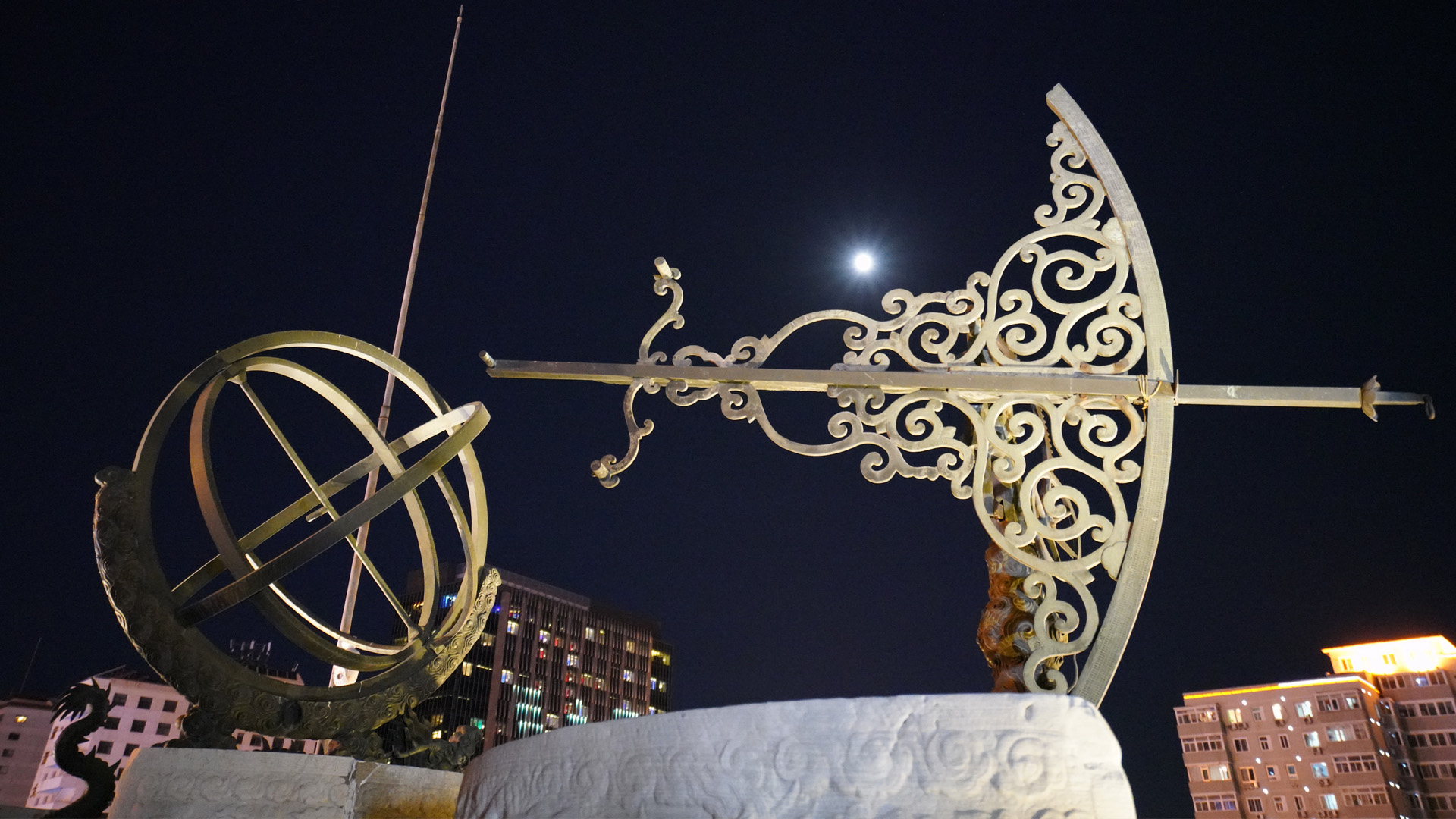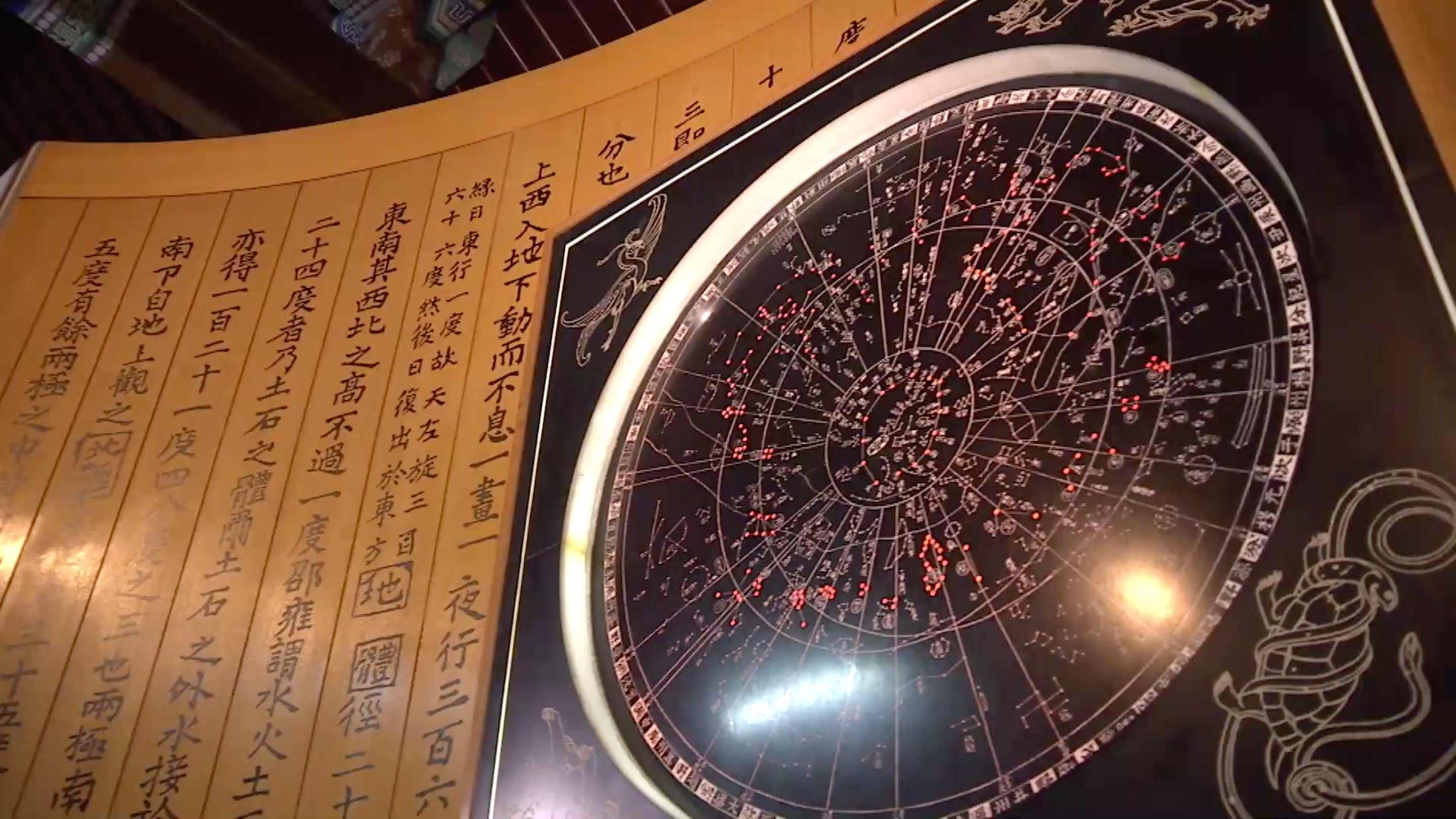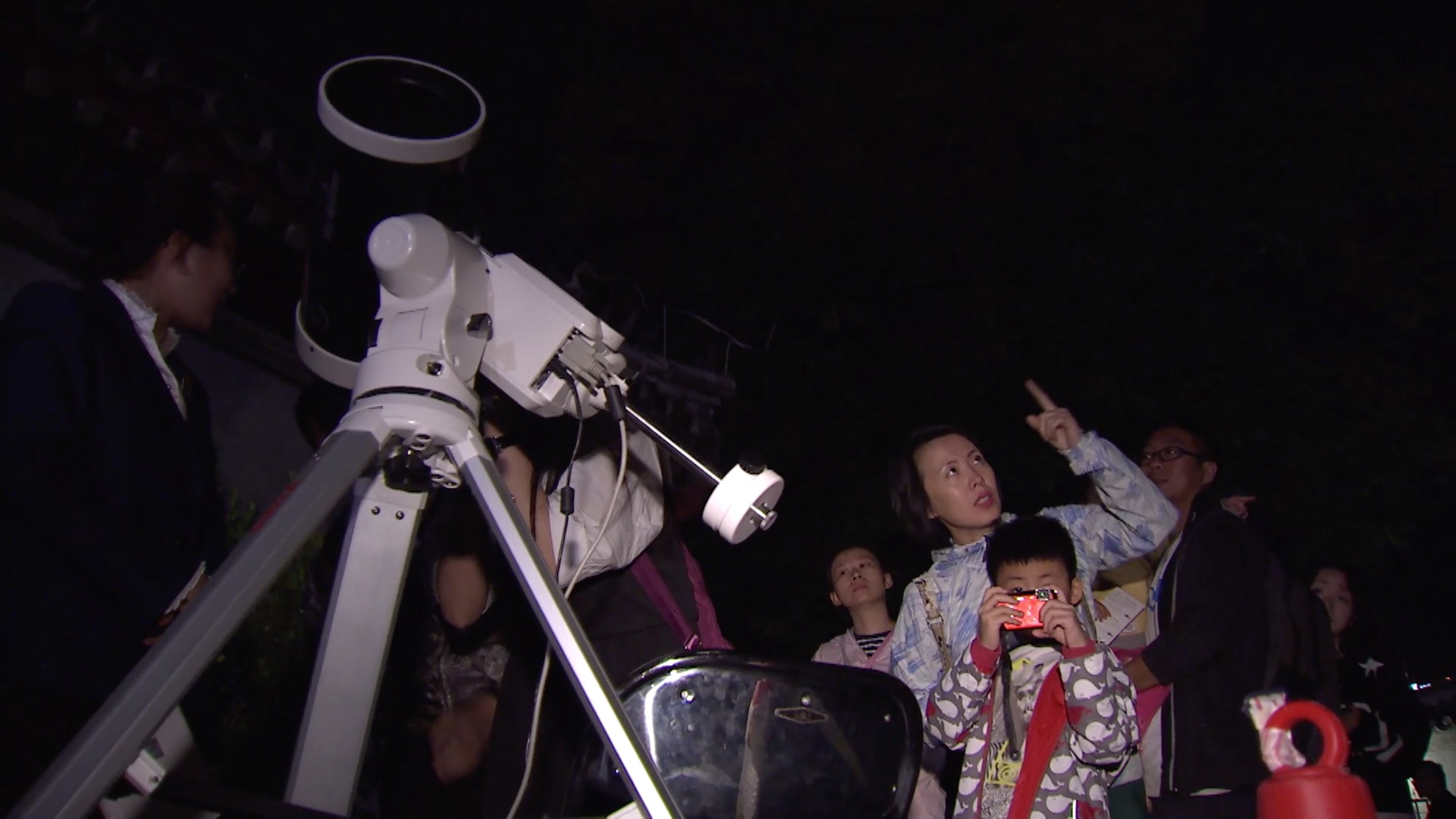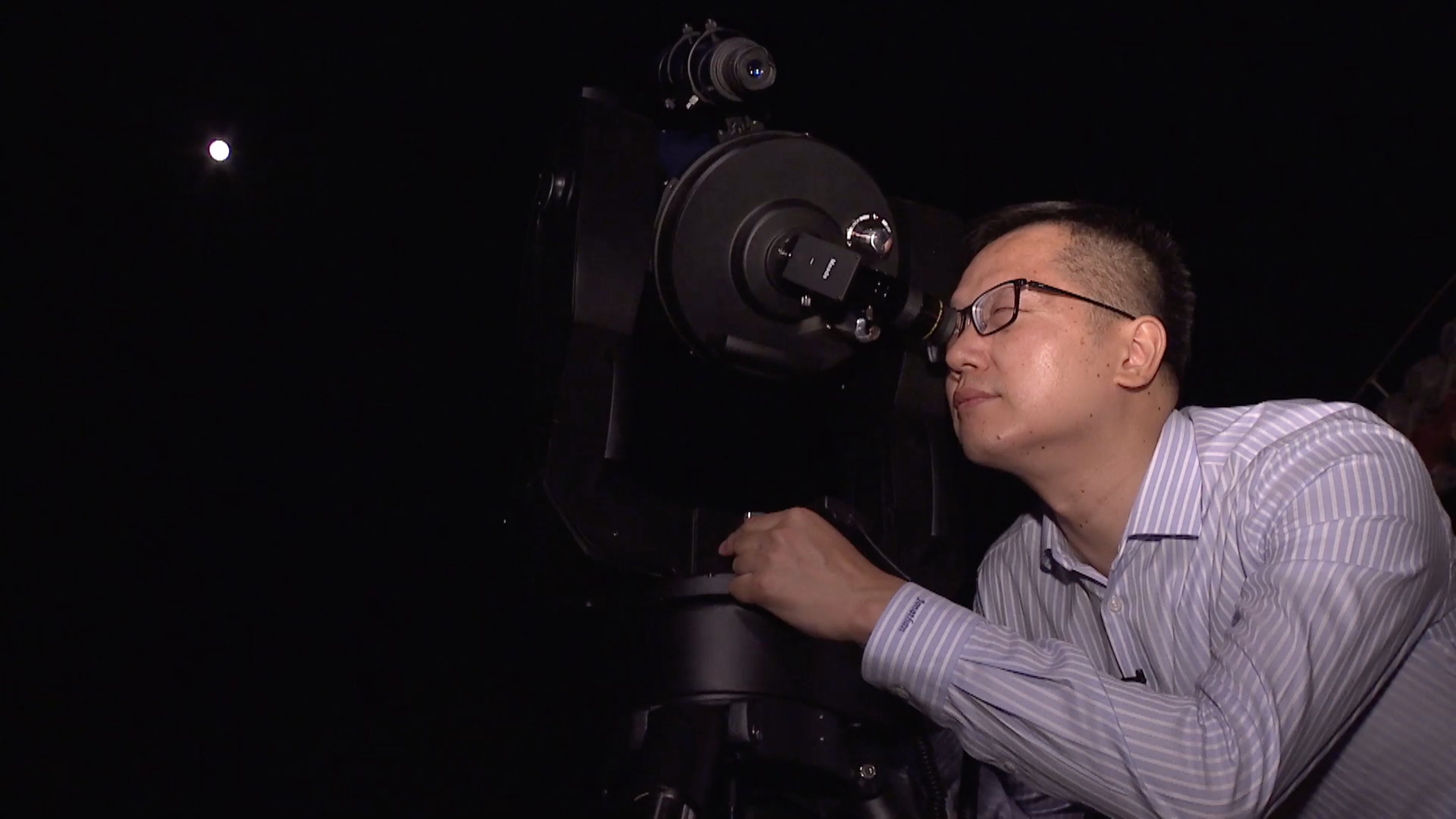
Culture
22:03, 24-Sep-2018
Hundreds spend Mid-Autumn Festival in ancient observatory
Updated
22:04, 27-Sep-2018
By Zheng Yibing
02:09

China's Mid-Autumn Festival is celebrated differently by different people. In Beijing, a 500-plus-year-old observatory opens to the public at night.
It's a rare opportunity to see the full moon up close via the observatory's state-of-the-art telescope. But how did ancient Chinese astronomers observe the moon when there were no telescopes?
For ancient Chinese, observing the moon or the starry sky would be very special.

Ancient Chinese had their own philosophy and styles in observing the sun, the moon and stars. Instead of using a telescope, they paid more attention to celestial motion. /CGTN Photo
Ancient Chinese had their own philosophy and styles in observing the sun, the moon and stars. Instead of using a telescope, they paid more attention to celestial motion. /CGTN Photo
Xiao Jun, curator of one of the world's oldest observatories in Beijing, said ancient Chinese valued the moon and everything it brings.
"The moon goes from waning to waxing and back again in almost 30 days. That's why we make our calendar based not only on the solar but also the lunar system," he said.

500-plus-year-old Beijing Ancient Observatory opens only one or two times to the public at night in a year for an astronomical observation. /CGTN Photo
500-plus-year-old Beijing Ancient Observatory opens only one or two times to the public at night in a year for an astronomical observation. /CGTN Photo
Instead of using a telescope, ancient Chinese paid more attention to the moon's motion, and of course many other visible stars.
"For celestial bodies like the moon, people in ancient times used devices like armillary spheres to find out its motion laws and effects on human life," Xiao Jun said.
Such observation evolved into a tradition, or even a sacrifice to the moon during the Mid-Autumn Festival, when people see the most beautiful full moon of the year. Experts say it stands for longevity.
Today, people still stick to the rituals, like eating mooncakes with family and friends and admiring the full moon together.
And some want to get a closer look at it.

Observing the starry sky. /CGTN Photo
Observing the starry sky. /CGTN Photo
A visitor with his family said they came here during this festival, hoping to let their children learn more about Chinese traditions, the calendar and astronomical observations since ancient times.
As a tradition lasting over centuries, the festival is even more popular among today's Chinese.
The full moon and the philosophy behind it bring people peace and happiness.

SITEMAP
Copyright © 2018 CGTN. Beijing ICP prepared NO.16065310-3
Copyright © 2018 CGTN. Beijing ICP prepared NO.16065310-3